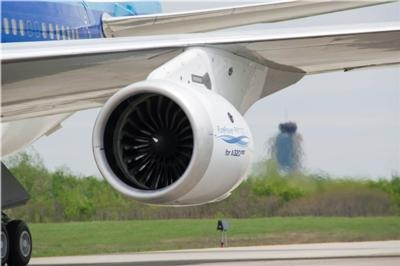Would Apply To New Airplanes With A MTOW Over 121,254 Pounds
The FAA has proposed a new rule that would establish 'Stage 5' noise standards that would have to be met by "any person submitting an application for a new airplane type design with a maximum certificated takeoff weight of 121,254 pounds (55,000 kg) or more on or after December 31, 2017; or with maximum certificated takeoff weight of less than 121,254 pounds (55,000 kg) on or after December 31, 2020.

"This change would reduce the noise produced by new airplanes and harmonize the noise certification standards for those airplanes certificated in the United States with the new International Civil Aviation Organization noise standard."
According to the NPRM published in the Federal Register, the International Civil Aviation Organization (ICAO) Assembly adopted Resolution A33–7, which outlined the basic components of a "Balanced Approach" process for managing aircraft noise at international airports. The Balanced Approach to noise mitigation includes (i) the reduction of noise at its source (i.e., the aircraft), (ii) improved land use planning around airports, and (iii) a wider use of aircraft operating procedures and restrictions that abate noise.
The FAA is proposing to add the following three terms to the FARs:
- Stage 5 noise level
- Stage 5 airplane
- Chapter 14 noise level
The first term, Stage 5 Noise Level, is the designation for maximum permitted noise levels for the proposed standard.
The second term, Stage 5 airplane, is the designation given to an airplane that complies with the proposed standard.
The third term, "Chapter 14 noise level", is the ICAO Annex 16, Volume 1 designation that corresponds to the Stage 5 noise level.
The noise limits adopted by ICAO for Chapter 4 were 10dB lower at every weight than the then-existing Chapter 3. However, Chapter 14 imposes the stringency requirements at different times for different aircraft weights it identifies. In addition, for aircraft less than 8618kgs, the stringencies adopted are not parallel to the Stage 4 standards.
The FAA understands the Chapter 14 requirements, proposed here as Stage 5, as follows:
a. An airplane’s maximum flyover, lateral and approach noise levels are each subtracted from the maximum permitted noise levels for Chapter 3 airplanes defined in Annex 16. The differences obtained are the noise limit margins which must be 17 EPNdB or greater when added together; and
b. An airplane’s maximum noise levels (flyover, lateral, and approach) have to be at least 1 EPNdB less than the maximum permitted noise levels for Chapter 3 airplanes.
The new standard would apply to new airplane types submitted for certification after December 31, 2017 (or December 31, 2020, for airplanes weighing less than 55,000 kilograms). In addition, the new standard includes another condition to the cumulative stringency requirement, to require a margin of not less than 1.0 dB below Chapter 3 limits at each certification point.
Chapter 14 includes a change in the noise limits applicable to subsonic jet airplanes with takeoff masses less than 8,618 kg, and added a second "knee point" at 8,618 kg, to use the same gradient of the limit line at lower masses as the higher masses and the constant limit line for airplanes with masses less than 2,000 kg.

The FAA says that recently, there have been technological advances in the lower weight classes such as the geared turbofan engine (pictured in file photo) and the development of quieter control surfaces.
Given these recent technological advances in lighter airplanes, the FAA expects all manufacturers to be able meet the new standards by the December 31, 2020, date. As this expectation is crucial to the minimal cost determination, the FAA requests comments regarding whether the existing and expected technological advancements will be sufficient to allow the manufacturers to achieve compliance with the provisions of the proposed rule by 2020.
In 2017 and 2020, when the proposed rule would become effective, all new type design subsonic transport category large airplanes, followed by smaller airplanes, will be able to meet the Stage 5 noise limits by using then-current available noise reduction technologies. Therefore, the proposed rule would have minimal, if any, cost.
 ANN's Daily Aero-Linx (05.04.24)
ANN's Daily Aero-Linx (05.04.24) NTSB Final Report: Quest Aircraft Co Inc Kodiak 100
NTSB Final Report: Quest Aircraft Co Inc Kodiak 100 Aero-News: Quote of the Day (05.04.24)
Aero-News: Quote of the Day (05.04.24) Aero-News: Quote of the Day (05.05.24)
Aero-News: Quote of the Day (05.05.24) Read/Watch/Listen... ANN Does It All
Read/Watch/Listen... ANN Does It All




